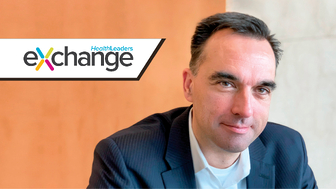HealthLeaders’ Annual Innovation Exchange gathers healthcare executives from across the country to explore the future of the industry. As a participant of the event, I wanted to share three takeaways from the session.


1. SDOH is a priority, but without a clear business model
There is an eagerness to take on social determinants of health and improve community engagement, but leaders struggled to explain the business model in the absence of major increases in risk taking by the organization. Those who had a lot of risk on the revenue side felt that they at least had a real shot at a business case, but they had not nailed down what exactly that is. Those who did not have much risk for total cost of care in their organizations were hoping for more risk but didn’t have a clear window to if/how that was coming.
2. Workforce burnout and cybersecurity are showstopper issues that everyone is just beginning to address.
There are some big, fairly common challenges across systems to which no one had solid answers. First was workforce burnout. Participants acknowledged the problem, and some shared their experimental interventions, but no one was sure how to solve the issue. Second was Cybersecurity. Concerns over the resiliency of their networks were abundant, but there was clear reluctance to add to their to do list a cyber playbook.
3. Some systems were not willing to cede the health care consumer experience to start ups.
Given the energy and investment in new health care players – some systems were investing big in talent and money to defend or even expand its existing set of patient relationships – others had a wait and see approach about the degree of threat these new entrants presented to their systems and business models. In essence, the reactions were bifurcated.
So what?
Bottom line: lots of smart, engaged leaders are trying to move forward with fundamental ambiguity within their organizations about the scope of change the organization will attempt and how to finance it. This approach is full of risk – as leaders either don’t go far enough for fear of failure – or start projects that will never scale, regardless of impact, because of funding issues.
Organizations need to….
- Set a defined level of long term investment buckets in transformation and risk/lives goals. Leaders can then know at least the potential scope of investment in terms of breath and depth.
- Put real stakes in the ground on workforce burnout and cyber risk planning. One small step would be: have any board meeting make workforce management a standing issue that had a significant impact on executive compensation.
- Refocus some board energy. Boards should evaluate adding IT expertise and commit to a cyber breach planning dedicated board meeting to educate all stakeholders and pre-make key decisions around communication, ransom payments etc.
Read our white paper, Healthcare in 2040, to learn more key planning considerations.
Blog authored by former Array team member, Neil Carpenter

